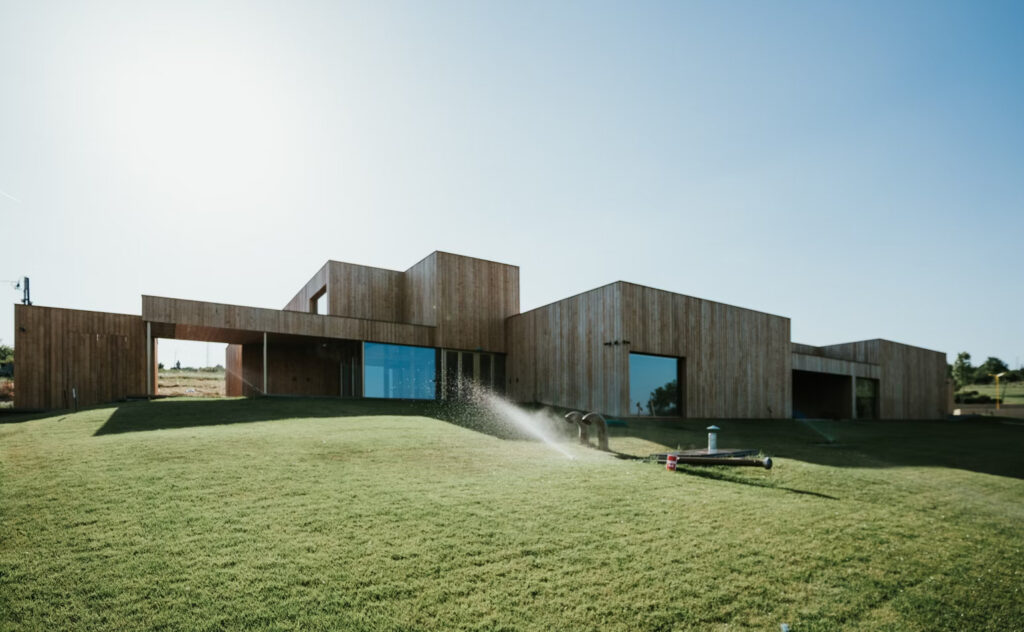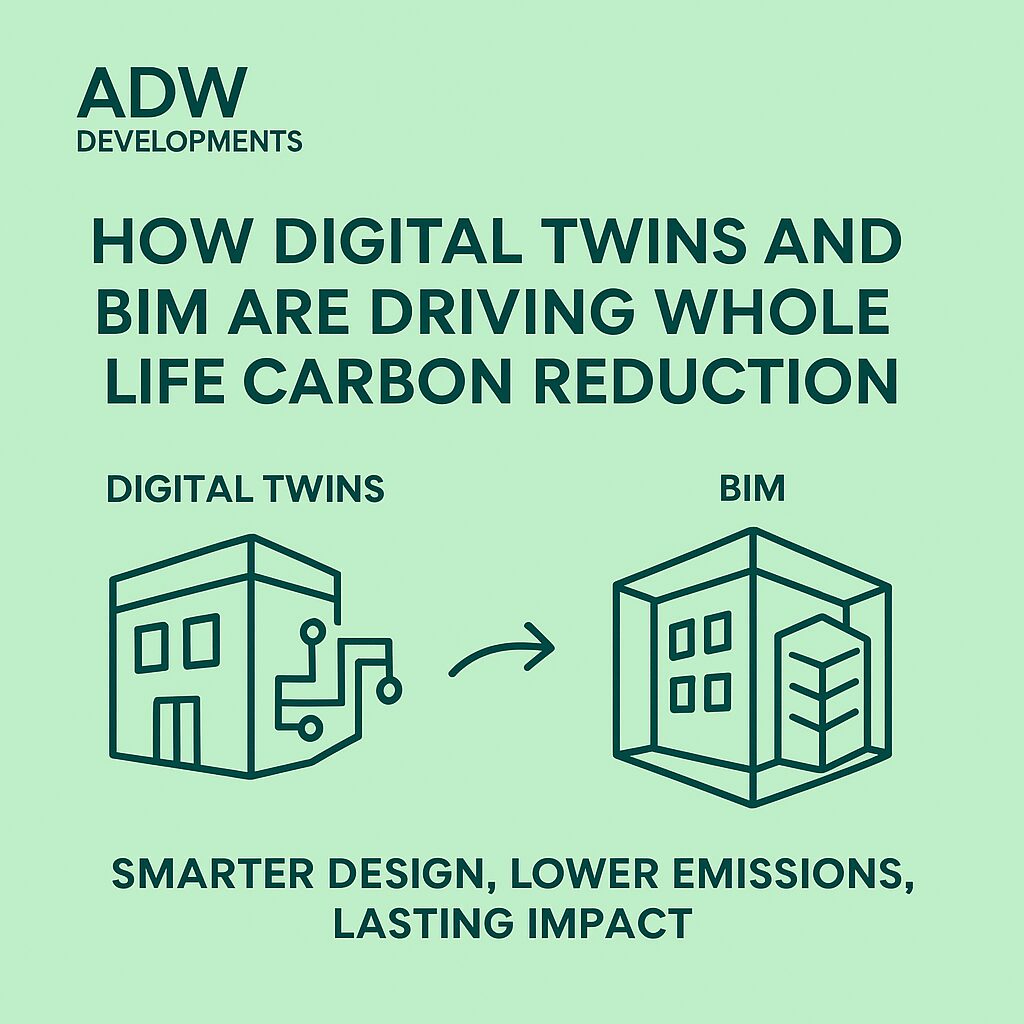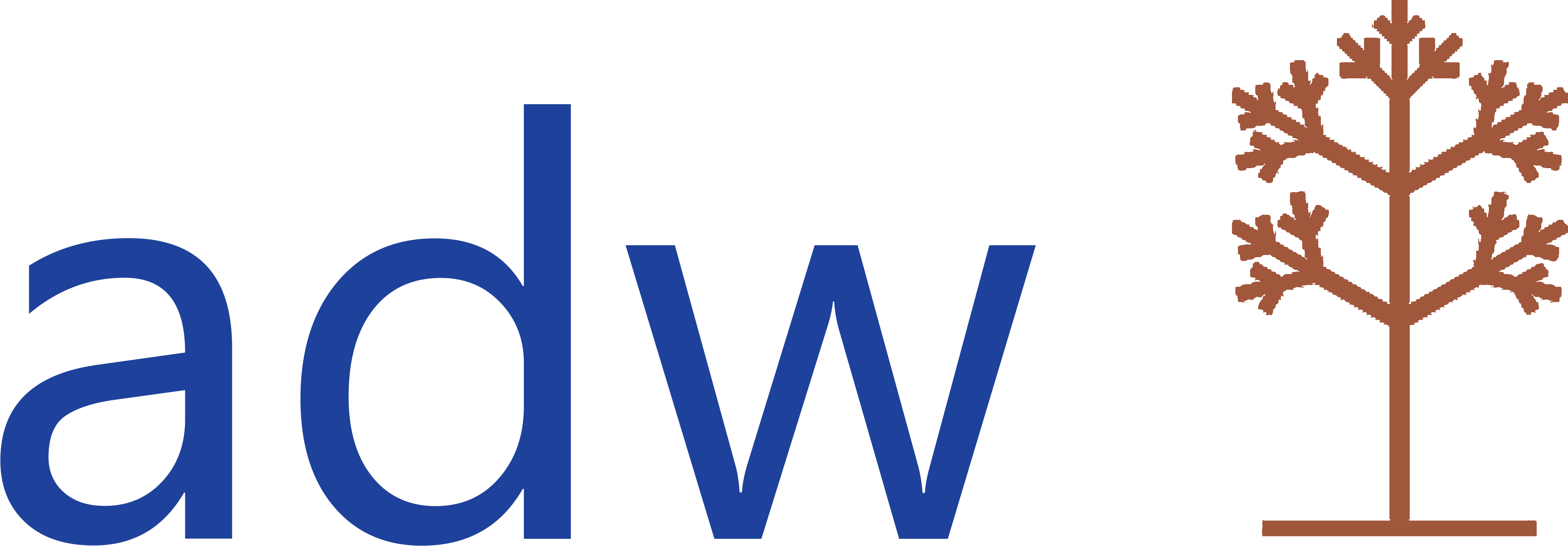The construction industry, a major source of global emissions, is entering a new digital era. At the forefront of this shift are Digital Twins and Building Information Modelling (BIM).
These technologies are transforming how we design, build, and operate buildings. By combining detailed design data with real-time performance insights, they enable smarter carbon management. Together, they help measure and reduce Whole Life Carbon (WLC), emissions produced from construction to end-of-life.
This article explores how Digital Twins and BIM work together to drive data-led strategies towards net-zero construction.

Understanding BIM and Digital Twins. The Foundations of Carbon Management
To fully appreciate their impact on Whole Life Carbon management, it is essential to understand each technology in its own right.
Building Information Modelling (BIM)
BIM is far more than three-dimensional modelling. It is a collaborative digital process that creates and manages detailed representations of a building’s physical and functional characteristics. A BIM model serves as a shared knowledge base for informed decision-making throughout a building’s lifecycle, from early design through to demolition.
Key aspects of BIM relevant to WLC include:
- Data-Rich Models: BIM holds detailed information about materials, quantities, and specifications, essential for calculating embodied carbon associated with extraction, manufacture, transport, and construction.
- Design Optimisation: Early clash detection and virtual coordination reduce design errors, material waste, and rework, directly lowering embodied emissions.
- Performance Simulation: BIM enables advanced simulations to optimise daylighting, energy use, and ventilation, critical factors in reducing operational carbon.
- Collaboration and Transparency: It facilitates integrated communication among all stakeholders, ensuring that carbon considerations are embedded from the earliest design stages.

Digital Twins
A Digital Twin is a dynamic, virtual counterpart of a physical asset that continuously evolves using real-time data from sensors and other sources. This ‘living model’ provides powerful insights into how a building performs throughout its operation.
For WLC management, Digital Twins deliver:
- Real-Time Performance Monitoring. They collect and analyse data on energy use, indoor environmental quality, and system performance, helping to pinpoint inefficiencies and reduce operational carbon.
- Predictive Maintenance. By anticipating equipment wear or failure, they enable proactive maintenance that extends asset life, minimises replacements, and cuts material-related emissions.
- Scenario Testing. Facility managers can simulate and compare operational strategies, such as optimising HVAC or lighting schedules, to identify carbon-saving opportunities without physical disruption.
- Lifecycle Integration. Digital Twins can connect data across design, construction, and operation, offering a comprehensive view of carbon performance over time.
While BIM provides the static, information-rich foundation, a Digital Twin brings that model to life. It transforms data into real-time intelligence, the bridge between design intent and operational reality.
Integrating BIM and Digital Twins for Holistic WLC Management
The real transformation in Whole Life Carbon management occurs when BIM and Digital Twins are combined. BIM provides the structured design and material data; the Digital Twin enhances it with live operational feedback. Together, they form a continuous data loop that drives intelligent carbon management throughout the entire lifecycle.
Key outcomes of this integration include:
- Design Optimisation for Embodied Carbon: BIM enables designers to compare the carbon intensity of different materials and structural options early on. The Digital Twin then validates these assumptions during construction by tracking real-world material use and waste.
- Operational Carbon Reduction: Real-time performance data allows for targeted interventions to address inefficiencies. For instance, if an HVAC system consumes more energy than modelled, the Digital Twin identifies the issue, enabling corrective action.
- Predictive Maintenance and Extended Lifespan: Continuous monitoring supports proactive maintenance planning, reducing premature replacements and associated embodied emissions.
- Circular Economy Enablement: By tracking materials and components over time, the integrated system supports reuse and recycling, minimising waste and conserving resources.
- Enhanced Reporting and Compliance: Combined BIM and Digital Twin data provides robust evidence for sustainability reporting and regulatory compliance, ensuring transparency and accountability.
This integrated approach replaces fragmented, reactive practices with a dynamic, connected process. It ensures that carbon reduction is not a one-off goal but an ongoing, measurable outcome embedded across every stage of a building’s life.
Accelerating the Path to Net Zero
When combined, Digital Twins and BIM transform sustainability goals into measurable action, driving real reductions in Whole Life Carbon.
- Accelerated Decarbonisation: These tools allow project teams to identify carbon hotspots, iterate rapidly, and prioritise high-impact interventions.
- Cost Efficiency: Optimising material use, reducing waste, and extending asset life all lead to significant long-term financial savings.
- Data-Driven Decision-Making: Real-time insights empower all stakeholders, from designers to facilities managers, to make better-informed, balanced decisions.
- Enhanced Building Performance: Continuous optimisation leads to improved comfort, health, and productivity for occupants.
- Regulatory Readiness: Detailed data records support compliance with tightening sustainability standards and reporting frameworks.
- Competitive Advantage: Early adopters gain market differentiation, demonstrating leadership in digital innovation and environmental performance.
Ultimately, these technologies move buildings from being static assets to becoming intelligent, adaptive systems that contribute actively to a low-carbon economy.
FAQs
What is Whole Life Carbon (WLC)?
Whole Life Carbon refers to the total greenhouse gas emissions generated over a building’s entire life, including embodied and operational emissions, from material sourcing to end-of-life.
How does BIM reduce embodied carbon?
BIM provides accurate data on material quantities and properties. It also allows designers to compare low-carbon alternatives and optimise structures early in the design phase.
What role do Digital Twins play in WLC management?
They provide continuous feedback on energy and resource performance, enabling ongoing optimisation and reduction of operational carbon.
How do BIM and Digital Twins work together?
BIM supplies the design foundation; the Digital Twin builds on it with real-time data. Together, they create a continuous feedback cycle for optimising performance across the asset lifecycle.
Can these technologies support circular construction?
Yes. Their integration allows for the tracking of materials, components, and their condition, facilitating reuse, recycling, and circular economy practices.
Building a Smarter, Greener Future
The integration of Digital Twins and Building Information Modelling is redefining Whole Life Carbon management. Together, they enable precise, data-led decisions that translate sustainability targets into measurable outcomes.
As the drive toward net zero accelerates, these technologies provide the transparency and control needed to cut emissions and enhance building performance. With BIM and Digital Twins, the industry can deliver more efficient, resilient, and genuinely sustainable assets. Contact us today to discover how we can support your project.
